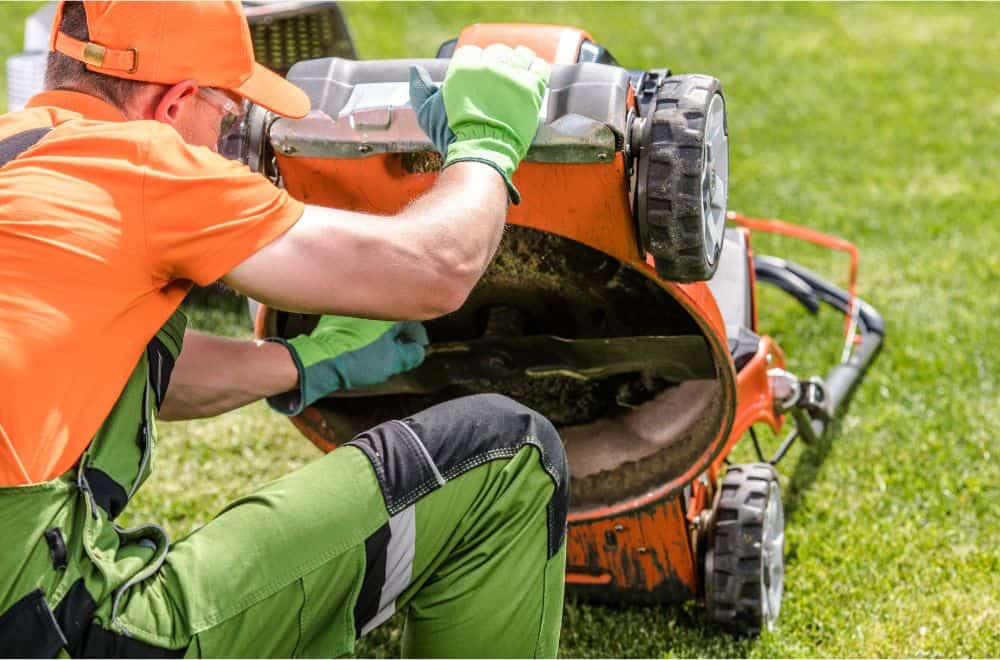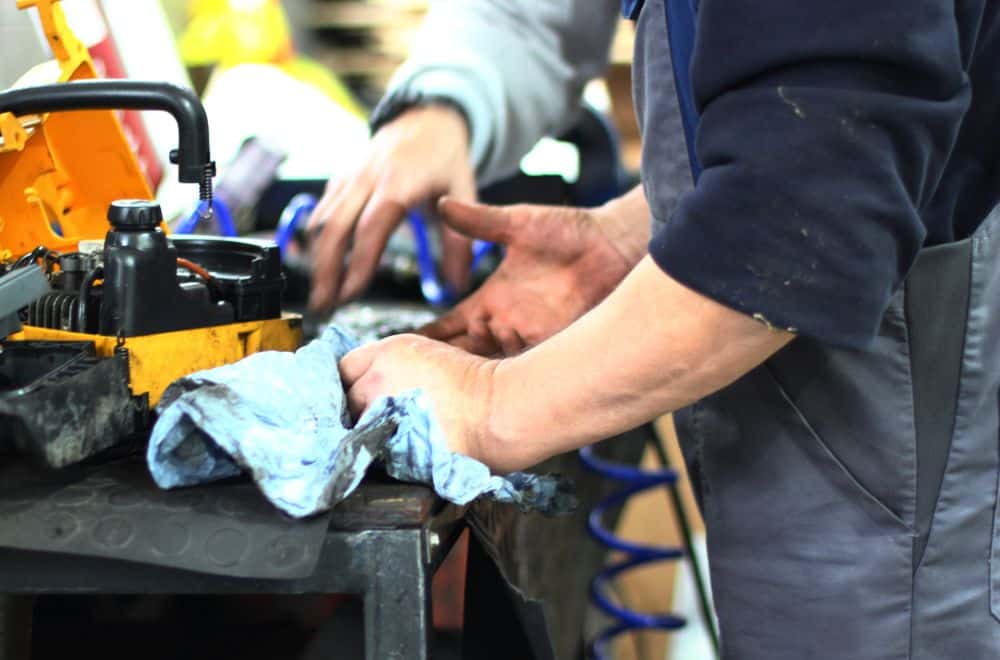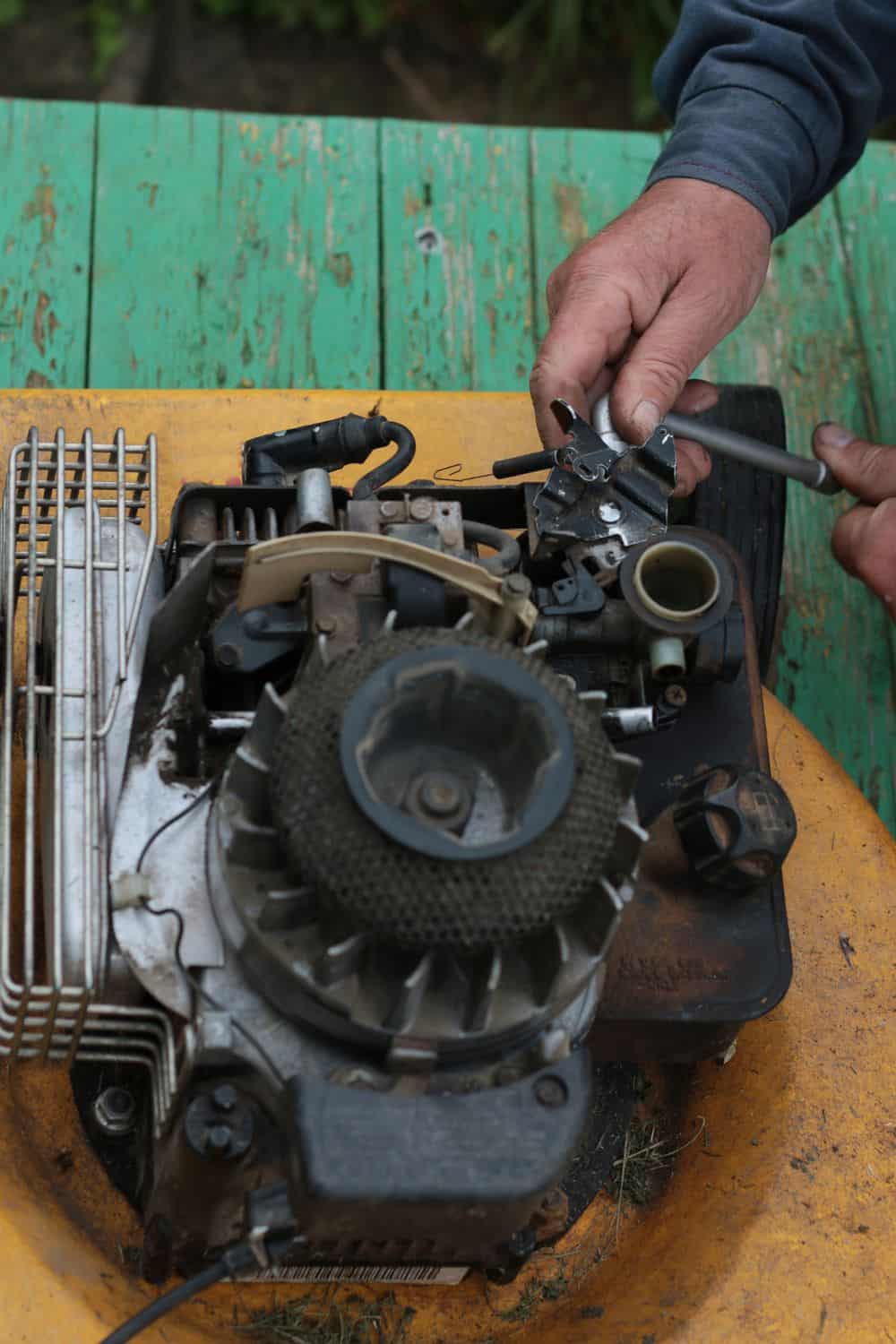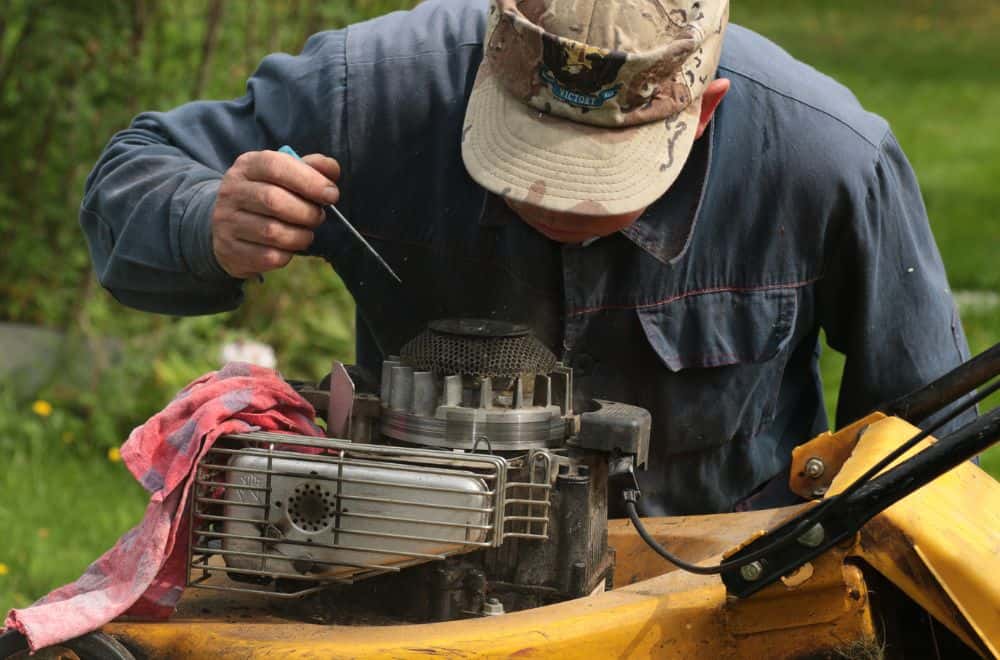At the start of the new mowing season, many people suddenly discover their Lawn mower that was working perfectly at the end of last year now doesn’t want to start. There could be several reasons for this, including old fuel, a dirty spark plug or many others. However, one of the most common causes for a mower to stop running properly is that it has a corroded or blocked carburetor.
Carburetors are not so hard to fix, but many people don’t feel confident taking an engine apart, preferring to take it to a repair shop – even though a dirty carburetor is something most people will be able to fix themselves.
If you want to save yourself some cash when your mower won’t start, here’s how to clean a Lawn mower carburetor at home.
If you want a preview, here’s a video that shows many of the steps we’ll be talking about.
Step-by-step guide to cleaning lawn mower carburetor
Here’s our step-by-step guide to cleaning a Lawn mower carburetor. If the carburetor is the problem, follow these steps to clean it yourself without needing to call in a professional.
Of course, this only applies to gas mowers and not to others like cordless electric Lawn mowers or battery-powered self-propelled Lawn mowers.
An important tip – if this is your first time cleaning a carburetor or you are not sure about how to put it back together, take photos with your cell phone at each step when you remove something. This way, you will have a guide when it comes to putting it back together.
Step 1. Safety first
Whenever carrying out repair work of any kind, safety should always be your primary concern. Since old fuel can be highly noxious, when taking apart a carburetor, the most important thing is to make sure you are working in a well-ventilated area.
If you are working in a garage, open the door and any windows. If possible, also use a ventilation fan. If your garage or workshop doesn’t have windows or doors you can open, you should consider working somewhere else.
Step 2. Check to see if the problem really is the carburetor

Sometimes when diagnosing a problem with machinery, some people can be too quick to jump to conclusions. For example, there might be a temptation to attribute the fault to a bad carburetor when actually the problem is something much simpler.
For this reason, before you start dismantling your Lawn mower, the first thing is to check a few other possibilities first.
Does your Lawn mower have fuel in it? Ok, so this might sound extremely obvious, but many people still forget to look.
If the mower has fuel in it, check the ignition switch is in the right position and also make sure the spark plug is attached properly and isn’t dirty.
Finally, have a look to see if the air filter is clean and free of debris.
If all of these are in order, shoot some carburetor cleaner into the carburetor and try starting the mower. If it starts or even splutters after you do this, it’s a good indication you really do have a carburetor problem and you need to remove it and give it a clean.
Step 3. Remove the outer casing and air filter
How to do this depends largely on your model of Lawn mower, but in general, it should simply be a case of unscrewing a few screws and removing the outer paneling to reveal the Lawn mower’s innards. Remove the air filter and you will find the carburetor.
Step 4. Unbolt the carburetor and remove it from the fuel line

The carburetor itself should be bolted in place. Unbolt the carburetor and then ease out the fuel line.
At this stage, some fuel should spill out of both the carburetor and the fuel line so it’s best to be ready with a piece of rag to catch the liquid.
If no fuel spills out, it may mean you have a different problem – this could be an indication that you have a fuel line blockage, so at this point, you might want to check that the fuel line is clear.
Step 5. Unbolt the bowl and clean the nut
The carburetor bowl is held in place by a single nut. First, clean around the bowl with carburetor cleaner then unscrew the nut and remove the bowl. This nut is actually a jet with a hole, and you need to make sure the hole is clear of any obstructions.
You can do this simply by poking a paper clip or piece of wire inside. Having a small piece of debris inside the jet is one of the most common reasons for a carburetor to stop working, and simply cleaning out the hole could fix your problem.
If the gasket is old, some of it may also be stuck to the nut – so give it a clean by scraping it off. Finally, spray the nut with some carburetor cleaner. Here’s a video that shows these steps clearly.
If the bowl is damaged or particularly dirty, you should replace it rather than try to clean it.
Step 6. Replace the needle

Once you remove the bowl, you will see the float attached to the carburetor with a pin. Remove the pin and replace the needle.
Inside the carburetor, there is a small gasket where the needle sits. You should also replace this, taking care to fit the new one the right way around.
Step 7. Spray the carburetor with cleaning fluid and clean inside the holes
Once you have removed all the parts, you should clean the carburetor by giving it a good spray with carburetor cleaner.
You will also need to clean inside the various holes in the carburetor. This can be done with a paperclip or piece of wire like with the nut in Step 6. Make sure that all the holes are clear and free of debris.
Step 8. Replace the main gasket
When you take the carburetor apart, it’s always a good idea to replace the main gasket that goes between the carburetor itself and the bowl. Simply remove the old one and fit a new one in its place.
Step 9. Reassemble and reattach
Using the photos you took at each step on your cell phone, put the carburetor back together and reattach it to the engine.
Once everything is back in place, add fuel to the tank and start it up. If you have fixed the problem, it should now start up easily.
A relatively easy issue to fix
Even for those who aren’t experienced in working with machines and engines, fixing a clogged or dirty carburetor is relatively easy and can save you money. However, if you follow all these steps and the mower still doesn’t go, it might be time to think about taking it to a repair shop.

Leave a comment